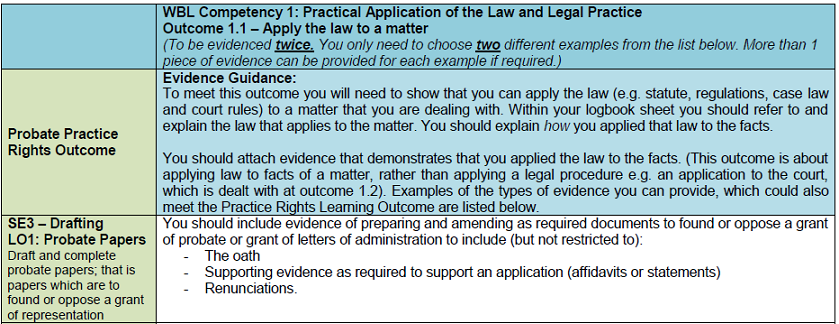To meet each Outcome, we have provided you with detailed guidance below to assist you in finding suitable examples. Use the Work-Based Learning Checklist to ensure you have met all the WBL Outcomes. The Probate Practice Rights Checklist helps you ensure you submit a wide range of Probate evidence.

Using the Outcomes Additional Guidance
Blue box: This information sets out the WBL requirement.
Green box: This information sets out the Probate Practice Rights requirement.
White box: This information provides further guidance on what to think about depending on the example you have chosen.
Each example you submit can include evidence from the lists provided to demonstrate that you meet the Learning Outcome fully. You can therefore provide more than one piece of evidence from the list for each example.
For example |
To meet Outcome 1.1 (see above), if you have selected preparation of a will or codicil |
Evidence |
The evidence provided would be the will itself, any instructions received and a copy of the covering letter sent to the client |
Logbook Sheet |
|
In the table below, you will find a link to additional guidance to help you provide sufficient evidence and explanation for each Work Based Learning Outcome.
Within these documents, we have also included guidance to help you provide sufficient evidence and explanation for each Probate Practice Rights Learning Outcome.


